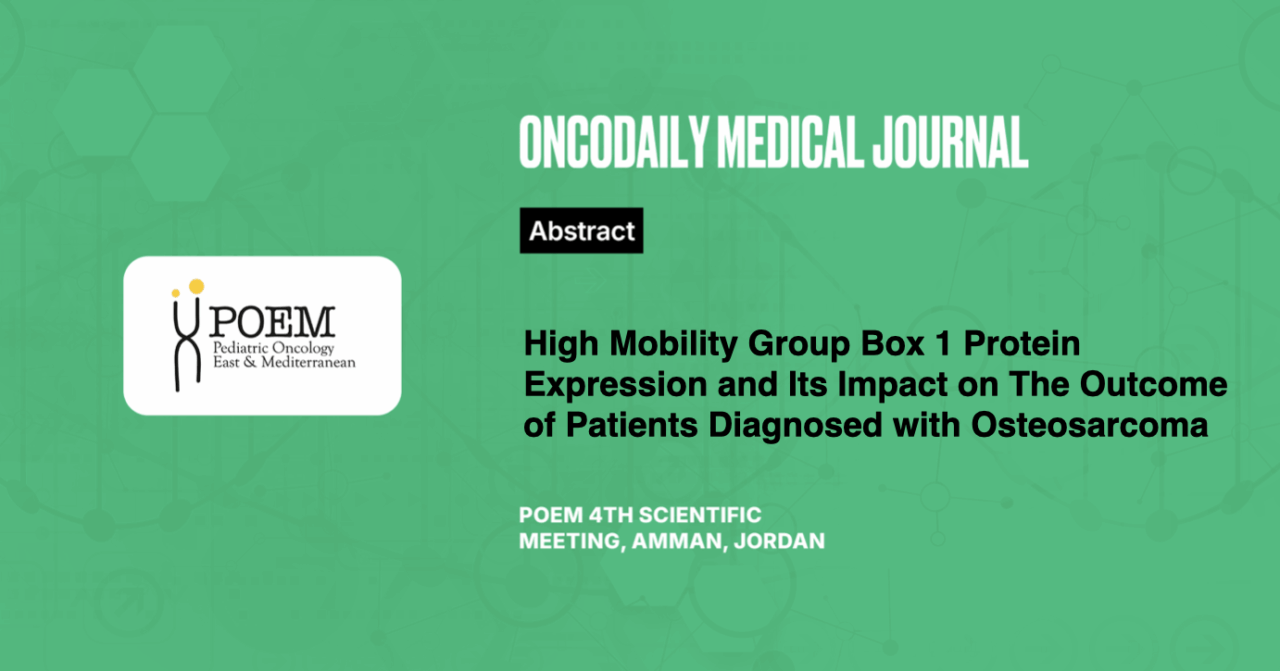High Mobility Group Box 1 Protein Expression and Its Impact on The Outcome of Patients Diagnosed with Osteosarcoma
Abstract
Introduction: Osteosarcoma (OS) is the most common malignant bone tumor in adolescents and young adults. Survival rate has been improved in localized OS. However, it remains poor for metastatic disease. HMGB1 is a DNA-binding nuclear protein promoting angiogenesis, cell replication, tissue invasion, metastasis, and chemoresistance, offering a novel target for OS therapy. In this study, we aim to identify HMGB1 as a prognostic marker.
Methodology: This is a retrospective study to evaluate the impact of HMGB1 overexpression in patients newly diagnosed with OS treated at the pediatric oncology department, NCI, Cairo University, Egypt, from January 2018 to January 2022; patients were followed for at least 6 months.
Assessment of HMGB1 overexpression: Immunohistochemistry was performed on paraffin sections of OS tissue samples preserved in the pathology department. The fractions of HMGB1 staining reactivity were assessed by positive cell proportion analysis. The staining intensity of HMGB1 expression in tumor cells was estimated per section and classified as Low reactivity (10-50%) & High reactivity (>50%) (He J. et al., 2016). In our study, we found a small proportion of very low reactivity (< 10%), so we considered (0-50%) as low risk.
Results: Median age for enrolled patients was 16 years. Tumors were staged according to the AJCC (TNM) staging system, and the relation between tumor stage and HMGB1 expression was significant (P-value = <0.001). The 3-year OS for the whole group was 48.3%, with a significant (P-value = <0.001) for HMGB1 expression on tumor tissue for low reactivity (≤ 50%) and high reactivity (>50%). Multivariate analysis was done using the COX-proportional hazard model; the independent factors that significantly affect the overall survival were tumor site axial vs extremities (P-value = 0.001), presence of metastasis at diagnosis (P-value = 0.001), and HMGB1 reactivity at diagnosis (P-value = <0.001).
Conclusions: Increased expression levels of HMGB1 were significantly associated with a poorer clinical prognosis and, therefore, may act as a marker for prognosis.





